Structural and Environmental Safety Studies of the Holy Mosque Area Using CFD
Abstract
1. Introduction
- Accumulating vehicular emissions at the street level [10] affects air quality;
- The pedestrian-level wind was tackled in the current case study. The comfort of pedestrians was considered the comfort of the prayers, visitors, and pilgrims.
- 4.
- Calm wind speed affects the air quality.
2. The Objectives
2.1. Gusting Wind
2.2. The Comfort of the Prayers/Visitors
2.3. The Air Quality (the Calm Wind Locations)
3. The CFD Model
3.1. The Geometry of the Model
3.2. The Grid Generation and Sensitivity Analysis
3.3. The Sensitivity of the Turbulence Model and the CFD Model Validation
3.4. The Wind Speeds and Directions
3.5. Assumptions and Simplifications
- There is no thermal effect considered.
- All short buildings around the Holy Mosque were ignored.
- Any interior locations inside the old Holy Mosque and their expansions were excluded.
- All areas nearby the existing internal mechanical ventilation were excluded from the present study.
- Details of the Holy Mosque, such as the minarets and the domes, were discarded.
3.6. The Boundary Conditions and the Solver Parameters
4. Results and Discussion
4.1. The Wind Gust Results
4.1.1. The Cranes on the Terraces
4.1.2. The Cranes on the Third Expansion
4.1.3. The Cranes on the Old Holy Mosque and the Masa’a
4.1.4. The Case of the Tower Crane Accident in 2015 (Location 25)
4.2. The Comfort of the Prayers/Visitors
- The wind speeds are at the walking comfort level in all locations on the piazza except P5, P6, and P9.
- The locations P6 and P9 are at a standing comfort level.
- The location P5 is at sitting comfort level.
- P7 and P8 are in the walking comfort level and have the maximum wind speed out of the eighteen points.
- The wind speed at point R1 on the terraces is at the walking comfort level, while points R2 and R3 are at the standing comfort level.
- The wind speeds on the top of the old Holy Mosque at locations R4 and R5 are at the standing comfort level. On the other hand, location R6 is at the sitting comfort level.
- The wind speeds on the first level of the terraces T1, T2, and T3 are at the sitting comfort level.
4.3. The Air Quality
5. Conclusions and Recommendations
- Finalize the work of the cranes on the Masa’a, the minarets, and the ceremonial dome before others.
- Change the locations of cranes exposed to strong wind and/or move their bases to lower levels, if possible.
- Lower the crane boom if it is at rest.
- Stop working on windy days.
- Study the effect of using mechanical ventilation by using large-scale fans. A wind tunnel or CFD should simulate the case to ensure sufficient mechanical ventilation.
- Using large-scale fans without prior modeling may help spread infectious diseases.
- Using natural ventilation is much better than mechanical ventilation.
- Study the possibility of improving the natural ventilation of the Holy Mosque by pruning the Abu Kubais Mount in the east and/or Qiqaan Mounts in the north.
- It is not recommended to have new tall buildings surrounding the Holy Mosque, especially from the north and the east, except after studying the impact on the air quality using either wind tunnel or CFD simulations.
Funding
Data Availability Statement
Conflicts of Interest
References
- Mendis, P.; Ngo, T.; Haritos, N.; Hira, A.; Samali, B.; Cheung, J. Wind Loading on Tall Buildings. Electron. J. Struct. Eng. 2007, 7, 41–54. [Google Scholar] [CrossRef]
- Thordal, M.S.; Bennetsen, J.C.; Koss, H.H.H. Review for practical application of CFD for the determination of wind load on high-rise buildings. J. Wind. Eng. Ind. Aerodyn. 2019, 186, 155–168. [Google Scholar] [CrossRef]
- Farouk, M.I.; Mourad, S.A.; Salaheldin, A.S. Numerical simulation of wind effects on an airport air traffic control tower. In WIT Transactions on the Built Environment; WIT Press: Billerica, MA, USA, 2007; Volume 92. [Google Scholar] [CrossRef]
- Dagnew, A.K.; Bitsuamlak, G.T. Computational evaluation of wind loads on buildings: A review. Wind. Struct. 2013, 16, 629–660. [Google Scholar] [CrossRef]
- Tamura, T.; Nozawa, K.; Kondo, K. AIJ guide for numerical prediction of wind loads on buildings. J. Wind. Eng. Ind. Aerodyn. 2008, 96, 1974–1984. [Google Scholar] [CrossRef]
- Farouk, M.I. Check the comfort of occupants in high rise building using CFD. Ain Shams Eng. J. 2016, 7, 953–958. [Google Scholar] [CrossRef]
- Hou, F.; Jafari, M. Investigation approaches to quantify wind-induced load and response of tall buildings: A review. Sustain. Cities Soc. 2020, 62, 102376. [Google Scholar] [CrossRef]
- Kwok, K.C.; Hitchcock, P.A.; Burton, M.D. Perception of vibration and occupant comfort in wind-excited tall buildings. J. Wind. Eng. Ind. Aerodyn. 2009, 97, 368–380. [Google Scholar] [CrossRef]
- Elias, S.; Matsagar, V. Wind response control of tall buildings with a tuned mass damper. J. Build. Eng. 2018, 15, 51–60. [Google Scholar] [CrossRef]
- Fu, L.; Hao, J.; He, D.; He, K.; Li, P. Assessment of vehicular pollution in China. J. Air Waste Manag. Assoc. 2001, 51, 658–668. [Google Scholar] [CrossRef]
- Rupp, R.F.; Vasquez, N.G.; Lamberts, R. A review of human thermal comfort in the built environment. Energy Build. 2015, 105, 178–205. [Google Scholar] [CrossRef]
- Cheng, V.; Ng, E.; Chan, C.; Givoni, B. Outdoor thermal comfort study in a sub-tropical climate: A longitudinal study based in Hong Kong. Int. J. Biometeorol. 2012, 56, 43–56. [Google Scholar] [CrossRef]
- Lai, D.; Lian, Z.; Liu, W.; Guo, C.; Liu, W.; Liu, K.; Chen, Q. A comprehensive review of thermal comfort studies in urban open spaces. Sci. Total. Environ. 2020, 742, 140092. [Google Scholar] [CrossRef]
- Potchter, O.; Cohen, P.; Lin, T.-P.; Matzarakis, A. Outdoor human thermal perception in various climates: A comprehensive review of approaches, methods and quantification. Sci. Total Environ. 2018, 631–632, 390–406. [Google Scholar] [CrossRef] [PubMed]
- Kamei, I.; Maruta, E. Study on wind environmental problems caused around buildings in Japan. J. Wind. Eng. Ind. Aerodyn. 1979, 4, 307–331. [Google Scholar] [CrossRef]
- Murakami, S.; Uehara, K.; Komine, H. Amplification of wind speed at ground level due to construction of high-rise building in urban area. J. Wind. Eng. Ind. Aerodyn. 1979, 4, 343–370. [Google Scholar] [CrossRef]
- Murakami, S.; Iwasa, Y.; Morikawa, Y. Study on acceptable criteria for assessing wind environment at ground level based on residents’ diaries. J. Wind. Eng. Ind. Aerodyn. 1986, 24, 1–18. [Google Scholar] [CrossRef]
- Penwarden, A.D.; Wise, A.F.E. Wind Environment around Buildings; HM Stationery Office: London, UK, 1975. [Google Scholar]
- Durgin, F.H. Pedestrian level wind studies at the Wright brothers facility. J. Wind. Eng. Ind. Aerodyn. 1992, 44, 2253–2264. [Google Scholar] [CrossRef]
- Isyumov, N. Studies of the pedestrian level wind environment at the boundary layer wind tunnel laboratory of the University of Western Ontario. J. Wind. Eng. Ind. Aerodyn. 1978, 3, 187–200. [Google Scholar] [CrossRef]
- Beranek, W.J. Wind Environment around Single Buildings of Rectangular Shape and Wind Environment around Building Configurations; Stevin-Laboratory of the Department of Civil Engineering, Delft University of Technology: Delft, The Netherlands, 1984. [Google Scholar]
- Stathopoulos, T. Wind environmental conditions around tall buildings with chamfered corners. J. Wind. Eng. Ind. Aerodyn. 1985, 21, 71–87. [Google Scholar] [CrossRef]
- Tsang, C.; Kwok, K.; Hitchcock, P. Wind tunnel study of pedestrian level wind environment around tall buildings: Effects of building dimensions, separation and podium. Build. Environ. 2012, 49, 167–181. [Google Scholar] [CrossRef]
- Xu, X.; Yang, Q.; Yoshida, A.; Tamura, Y. Characteristics of pedestrian-level wind around super-tall buildings with various configurations. J. Wind. Eng. Ind. Aerodyn. 2017, 166, 61–73. [Google Scholar] [CrossRef]
- Mittal, H.; Sharma, A.; Gairola, A. A review on the study of urban wind at the pedestrian level around buildings. J. Build. Eng. 2018, 18, 154–163. [Google Scholar] [CrossRef]
- Irwin, H. A simple omnidirectional sensor for wind-tunnel studies of pedestrian-level winds. J. Wind. Eng. Ind. Aerodyn. 1981, 7, 219–239. [Google Scholar] [CrossRef]
- Uematsu, T.; Yamada, K.-I.; Matsuno, H.; Nakashima, M. The Measurement of Haloperidol and Reduced Haloperidol in Neonatal Hair as an Index of Placental Transfer of Maternal Haloperidol. Ther. Drug Monit. 1991, 13, 183–187. [Google Scholar] [CrossRef]
- Wu, H.; Stathopoulos, T. Wind-Tunnel Techniques for Assessment of Pedestrian-Level Winds. J. Eng. Mech. 1993, 119, 1920–1936. [Google Scholar] [CrossRef]
- Jackson, P. The evaluation of windy environments. Build. Environ. 1978, 13, 251–260. [Google Scholar] [CrossRef]
- Melbourne, W. Criteria for environmental wind conditions. J. Wind. Eng. Ind. Aerodyn. 1978, 3, 241–249. [Google Scholar] [CrossRef]
- Hunt, J.; Poulton, E.; Mumford, J. The effects of wind on people; New criteria based on wind tunnel experiments. Build. Environ. 1976, 11, 15–28. [Google Scholar] [CrossRef]
- Durgin, F.H. Pedestrian level wind criteria using the equivalent average. J. Wind. Eng. Ind. Aerodyn. 1997, 66, 215–226. [Google Scholar] [CrossRef]
- Arens, E.; Ballanti, D.; Bennett, C.; Guldman, S.; White, B. Developing the San Francisco wind ordinance and its guidelines for compliance. Build. Environ. 1989, 24, 297–303. [Google Scholar] [CrossRef]
- Durgin, F.H. Proposed guidelines for pedestrian level wind studies for Boston—Comparison of results from 12 studies. Build. Environ. 1989, 24, 305–314. [Google Scholar] [CrossRef]
- Willemsen, E.; Wisse, J.A. Design for wind comfort in The Netherlands: Procedures, criteria and open research issues. J. Wind. Eng. Ind. Aerodyn. 2007, 95, 1541–1550. [Google Scholar] [CrossRef]
- Ng, E. Policies and technical guidelines for urban planning of high-density cities—Air ventilation assessment (AVA) of Hong Kong. Build. Environ. 2009, 44, 1478–1488. [Google Scholar] [CrossRef]
- Soligo, M.J.; Irwin, P.A.; Williams, C.J.; Schuyler, G.D. A comprehensive assessment of pedestrian comfort including thermal effects. J. Wind. Eng. Ind. Aerodyn. 1998, 77–78, 753–766. [Google Scholar] [CrossRef]
- Lawson, T.V.; Penwarden, A.D. The effects of wind on people in the vicinity of buildings. In Proceedings of the 4th International Conference on Wind Effects on Building and Structures, London, UK, 9 August 1975. [Google Scholar]
- Isyumov, N.; Davenport, A.G. The ground level wind environment in built-up areas. In Proceedings of the 4th International Conference on Wind Effects on Building and Structures, London, UK, 9 August 1975. [Google Scholar]
- Lawson, T.V. The Determination of the Wind Environment of a Building Complex before Construction; Report Number TVL; Department of Aerospace Engineering, University of Bristol: Bristol, UK, 1990; Volume 9025. [Google Scholar]
- Yip, C.; Chang, W.L.; Yeung, K.H.; Yu, I.T.S. Possible meteorological influence on the severe acute respiratory syndrome (SARS) community outbreak at Amoy Gardens, Hong Kong. J. Environ. Health 2007, 70, 39–47. [Google Scholar]
- Zhang, Y.; Kwok, K.; Liu, X.-P.; Niu, J.-L. Characteristics of air pollutant dispersion around a high-rise building. Environ. Pollut. 2015, 204, 280–288. [Google Scholar] [CrossRef]
- Van Doremalen, N.; Bushmaker, T.; Morris, D.H.; Holbrook, M.G.; Gamble, A.; Williamson, B.N.; Tamin, A.; Harcourt, J.L.; Thornburg, N.J.; Gerber, S.I.; et al. Aerosol and Surface Stability of SARS-CoV-2 as Compared with SARS-CoV-1. N. Engl. J. Med. 2020, 382, 1564–1567. [Google Scholar] [CrossRef] [PubMed]
- Coccia, M. How do low wind speeds and high levels of air pollution support the spread of COVID-19? Atmos. Pollut. Res. 2021, 12, 437–445. [Google Scholar] [CrossRef] [PubMed]
- Coccia, M. The effects of atmospheric stability with low wind speed and of air pollution on the accelerated transmission dynamics of COVID-19. Int. J. Environ. Stud. 2021, 78, 1–27. [Google Scholar] [CrossRef]
- Al-Jeelani, H.A. Evaluation of air quality in the Holy Makkah during Hajj season 1425 H. J. Appl. Sci. Res. 2009, 5, 115–121. [Google Scholar]
- Seroji, A.R. Particulates in the atmosphere of Makkah and Mina Valley during the Ramadan and Hajj seasons of 2004 and 2005. In Air Pollution XIX; Brebbia, C.A., Longhurst, J.W.S., Popov, V., Eds.; Wessex Institute of Technology: Southampton, UK, 2011; pp. 319–327. [Google Scholar]
- Habeebullah, T.M. An Analysis of Air Pollution in Makkah—A View Point of Source Identification. Environ. Asia 2013, 2, 11–17. [Google Scholar]
- Simpson, I.J.; Aburizaiza, O.S.; Siddique, A.; Barletta, B.; Blake, N.J.; Gartner, A.; Khwaja, H.; Meinardi, S.; Zeb, J.; Blake, D.R. Air Quality in Mecca and Surrounding Holy Places in Saudi Arabia During Hajj: Initial Survey. Environ. Sci. Technol. 2014, 48, 8529–8537. [Google Scholar] [CrossRef] [PubMed]
- Farahat, A.; Chauhan, A.; Al Otaibi, M.; Singh, R.P. Air Quality over Major Cities of Saudi Arabia During Hajj Periods of 2019 and 2020. Earth Syst. Environ. 2021, 5, 101–114. [Google Scholar] [CrossRef]
- Nayebare, S.R.; Aburizaiza, O.S.; Siddique, A.; Carpenter, D.O.; Hussain, M.M.; Zeb, J.; Aburiziza, A.J.; Khwaja, H.A. Ambient air quality in the holy city of Makkah: A source apportionment with elemental enrichment factors (EFs) and factor analysis (PMF). Environ. Pollut. 2018, 243, 1791–1801. [Google Scholar] [CrossRef]
- Munir, S.; Habeebullah, T.M.; Seroji, A.R.; Gabr, S.S.; Mohammed, A.M.; Morsy, E.A. Quantifying temporal trends of atmospheric pollutants in Makkah (1997–2012). Atmos. Environ. 2013, 77, 647–655. [Google Scholar] [CrossRef]
- Al-Jeelani, H.A. Air quality assessment at Al-Taneem area in the Holy Makkah City, Saudi Arabia. Environ. Monit. Assess. 2009, 156, 211–222. [Google Scholar] [CrossRef]
- Farouk, M. Three-Dimensional Dynamic Numerical Simulation of the Holy Mosque Area. 2023. Available online: https://easychair.org/publications/preprint/dGbCH (accessed on 30 May 2023). EasyChair Preprint no. 9865.
- Ascoura, I.E. Impact of Pilgrimage (Hajj) on the Urban Growth of the Mecca. J. Educ. Soc. Res. 2013, 3, 255. [Google Scholar] [CrossRef]
- Qin, R.; Yan, D.; Zhou, X.; Jiang, Y. Research on a dynamic simulation method of atrium thermal environment based on neural network. Build. Environ. 2012, 50, 214–220. [Google Scholar] [CrossRef]
- Yi, Y.K.; Malkawi, A. Site-specific optimal energy form generation based on hierarchical geometry relation. Autom. Constr. 2012, 26, 77–91. [Google Scholar] [CrossRef]
- Brahimi, T. Using Artificial Intelligence to Predict Wind Speed for Energy Application in Saudi Arabia. Energies 2019, 12, 4669. [Google Scholar] [CrossRef]
- Wijesooriya, K.; Mohotti, D.; Lee, C.-K.; Mendis, P. A technical review of computational fluid dynamics (CFD) applications on wind design of tall buildings and structures: Past, present and future. J. Build. Eng. 2023, 74, 106828. [Google Scholar] [CrossRef]
- Zhang, R.; Mirzaei, P.A. Virtual dynamic coupling of computational fluid dynamics-building energy simulation-artificial intelligence: Case study of urban neighbourhood effect on buildings’ energy demand. Build. Environ. 2021, 195, 107728. [Google Scholar] [CrossRef]
- ANSYS Fluent, Release 15; ANSYS, Inc.: Canonsburg, PA, USA, 2013.
- Richards, P.; Hoxey, R. Appropriate boundary conditions for computational wind engineering models using the k-ϵ turbulence model. J. Wind. Eng. Ind. Aerodyn. 1993, 46–47, 145–153. [Google Scholar] [CrossRef]
- Murakami, S. Computational wind engineering. J. Wind. Eng. Ind. Aerodyn. 1990, 36, 517–538. [Google Scholar] [CrossRef]
- Murakami, S. Current status and future trends in computational wind engineering. J. Wind. Eng. Ind. Aerodyn. 1997, 67–68, 3–34. [Google Scholar] [CrossRef]
- Bottema, M.; Leene, J.; Wisse, J. Towards forecasting of wind comfort. J. Wind. Eng. Ind. Aerodyn. 1992, 44, 2365–2376. [Google Scholar] [CrossRef]
- Stathopoulos, T. Computational wind engineering: Past achievements and future challenges. J. Wind. Eng. Ind. Aerodyn. 1997, 67–68, 509–532. [Google Scholar] [CrossRef]
- Stathopoulos, T. Pedestrian level winds and outdoor human comfort. J. Wind. Eng. Ind. Aerodyn. 2006, 94, 769–780. [Google Scholar] [CrossRef]
- Li, W.; Wang, F.; Bell, S. Simulating the sheltering effects of windbreaks in urban outdoor open space. J. Wind. Eng. Ind. Aerodyn. 2007, 95, 533–549. [Google Scholar] [CrossRef]
- Yoshie, R.; Mochida, A.; Tominaga, Y.; Kataoka, H.; Harimoto, K.; Nozu, T.; Shirasawa, T. Cooperative project for CFD prediction of pedestrian wind environment in the Architectural Institute of Japan. J. Wind Eng. Ind. Aerodyn. 2007, 95, 1551–1578. [Google Scholar] [CrossRef]
- Lin, B.; Li, X.; Zhu, Y.; Qin, Y. Numerical simulation studies of the different vegetation patterns’ effects on outdoor pedestrian thermal comfort. J. Wind. Eng. Ind. Aerodyn. 2008, 96, 1707–1718. [Google Scholar] [CrossRef]
- Farouk, M. Comparative study of hexagon & square windcatchers using CFD simulations. J. Build. Eng. 2020, 31, 101366. [Google Scholar] [CrossRef]
- Calautit, J.K.; Hughes, B.R. Wind tunnel and CFD study of the natural ventilation performance of a commercial multi-directional wind tower. Build. Environ. 2014, 80, 71–83. [Google Scholar] [CrossRef]
- Calautit, J.K.; Hughes, B.R.; Ghani, S.A. A numerical investigation into the feasibility of integrating green building technologies into row houses in the Middle East. Arch. Sci. Rev. 2013, 56, 279–296. [Google Scholar] [CrossRef]
- Ferreira, A.D.; Sousa AC, M.; Viegas, D.X. Prediction of building interference effects on pedestrian level comfort. J. Wind. Eng. Ind. Aerodyn. 2002, 90, 305–319. [Google Scholar] [CrossRef]
- Farouk, M.I.; Nassar, A.F.; Elgamal, M.H. Numerical Study of the Transmission of Exhaled Droplets between the Instructor and Students in a Typical Classroom. Appl. Sci. 2021, 11, 9767. [Google Scholar] [CrossRef]
- Zhang, A.; Gao, C.; Zhang, L. Numerical simulation of the wind field around different building arrangements. J. Wind. Eng. Ind. Aerodyn. 2005, 93, 891–904. [Google Scholar] [CrossRef]
- Blocken, B.; Carmeliet, J.; Stathopoulos, T. CFD evaluation of wind speed conditions in passages between parallel buildings—Effect of wall-function roughness modifications for the atmospheric boundary layer flow. J. Wind. Eng. Ind. Aerodyn. 2007, 95, 941–962. [Google Scholar] [CrossRef]
- Blocken, B.; Roels, S.; Carmeliet, J. Modification of pedestrian wind comfort in the Silvertop Tower passages by an automatic control system. J. Wind. Eng. Ind. Aerodyn. 2004, 92, 849–873. [Google Scholar] [CrossRef]
- Blocken, B.; Persoon, J. Pedestrian wind comfort around a large football stadium in an urban environment: CFD simulation, validation and application of the new Dutch wind nuisance standard. J. Wind. Eng. Ind. Aerodyn. 2009, 97, 255–270. [Google Scholar] [CrossRef]
- An, K.; Fung, J.; Yim, S.H.L. Sensitivity of inflow boundary conditions on downstream wind and turbulence profiles through building obstacles using a CFD approach. J. Wind. Eng. Ind. Aerodyn. 2013, 115, 137–149. [Google Scholar] [CrossRef]
- Tominaga, Y.; Mochida, A.; Murakami, S.; Sawaki, S. Comparison of various revised k–ε models and LES applied to flow around a high-rise building model with 1:1:2 shape placed within the surface boundary layer. J. Wind Eng. Ind. Aerodyn. 2008, 96, 389–411. [Google Scholar] [CrossRef]
- He, J.; Song, C.C. Evaluation of pedestrian winds in urban area by numerical approach. J. Wind. Eng. Ind. Aerodyn. 1999, 81, 295–309. [Google Scholar] [CrossRef]
- Cheng, Y.; Lien, F.; Yee, E.; Sinclair, R. A comparison of large Eddy simulations with a standard k–ε Reynolds-averaged Navier–Stokes model for the prediction of a fully developed turbulent flow over a matrix of cubes. J. Wind. Eng. Ind. Aerodyn. 2003, 91, 1301–1328. [Google Scholar] [CrossRef]
- Salim, S.M.; Buccolieri, R.; Chan, A.; DI Sabatino, S. Numerical simulation of atmospheric pollutant dispersion in an urban street canyon: Comparison between RANS and LES. J. Wind Eng. Ind. Aerodyn. 2011, 99, 103–113. [Google Scholar] [CrossRef]
- Daniels, S.J.; Xie, Z.-T. Overview of large-eddy simulation for wind loading on slender structures. Proc. Inst. Civ. Eng.-Eng. Comput. Mech. 2022, 175, 41–71. [Google Scholar] [CrossRef]
- Shehata, A.; Waheeb, S. Thermal Performance of Contemporary Residential Buildings in Hot-Arid Climates. J. Adv. Res. Dyn. Control Syst. 2018, 10, 1295–1303. [Google Scholar]
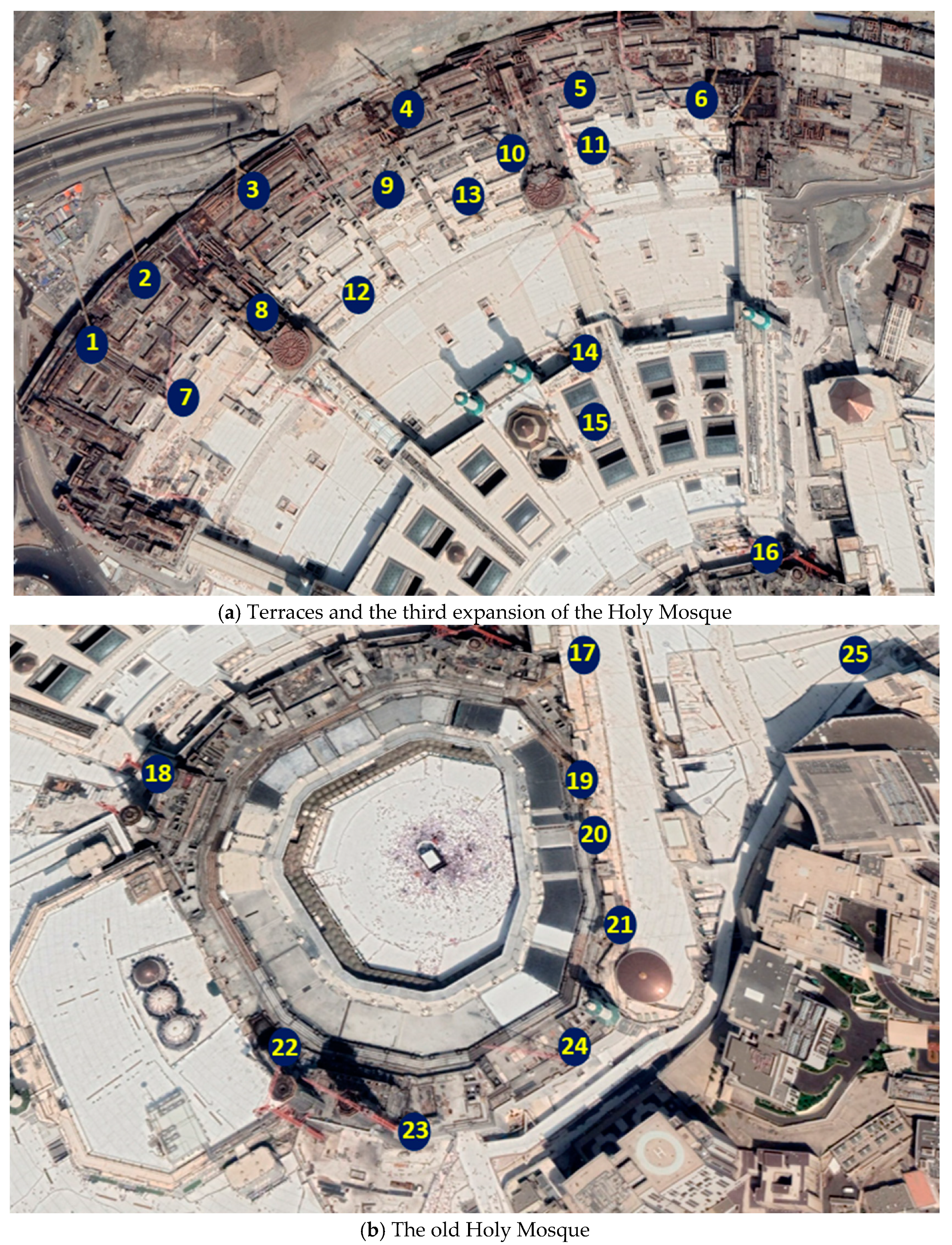
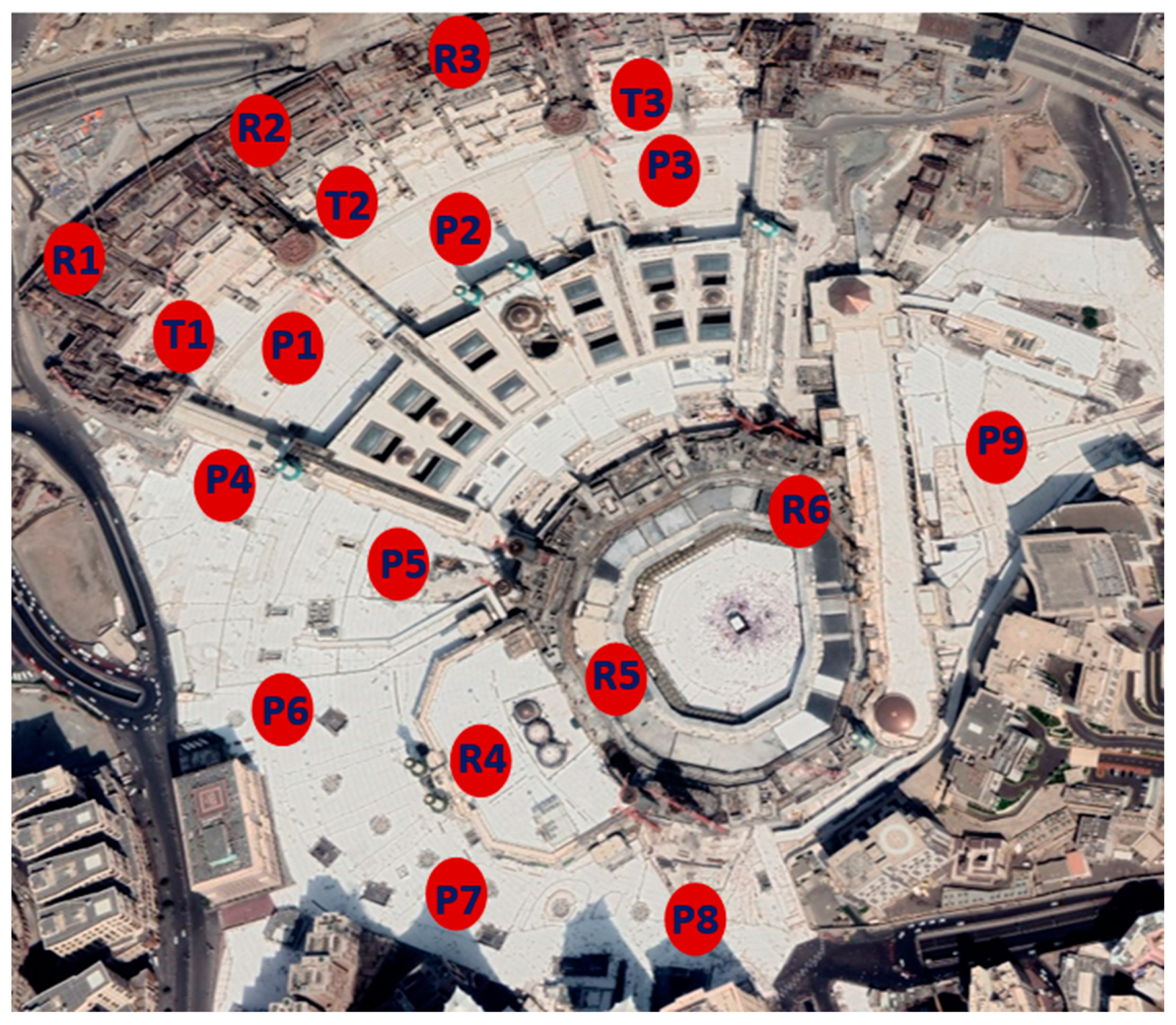
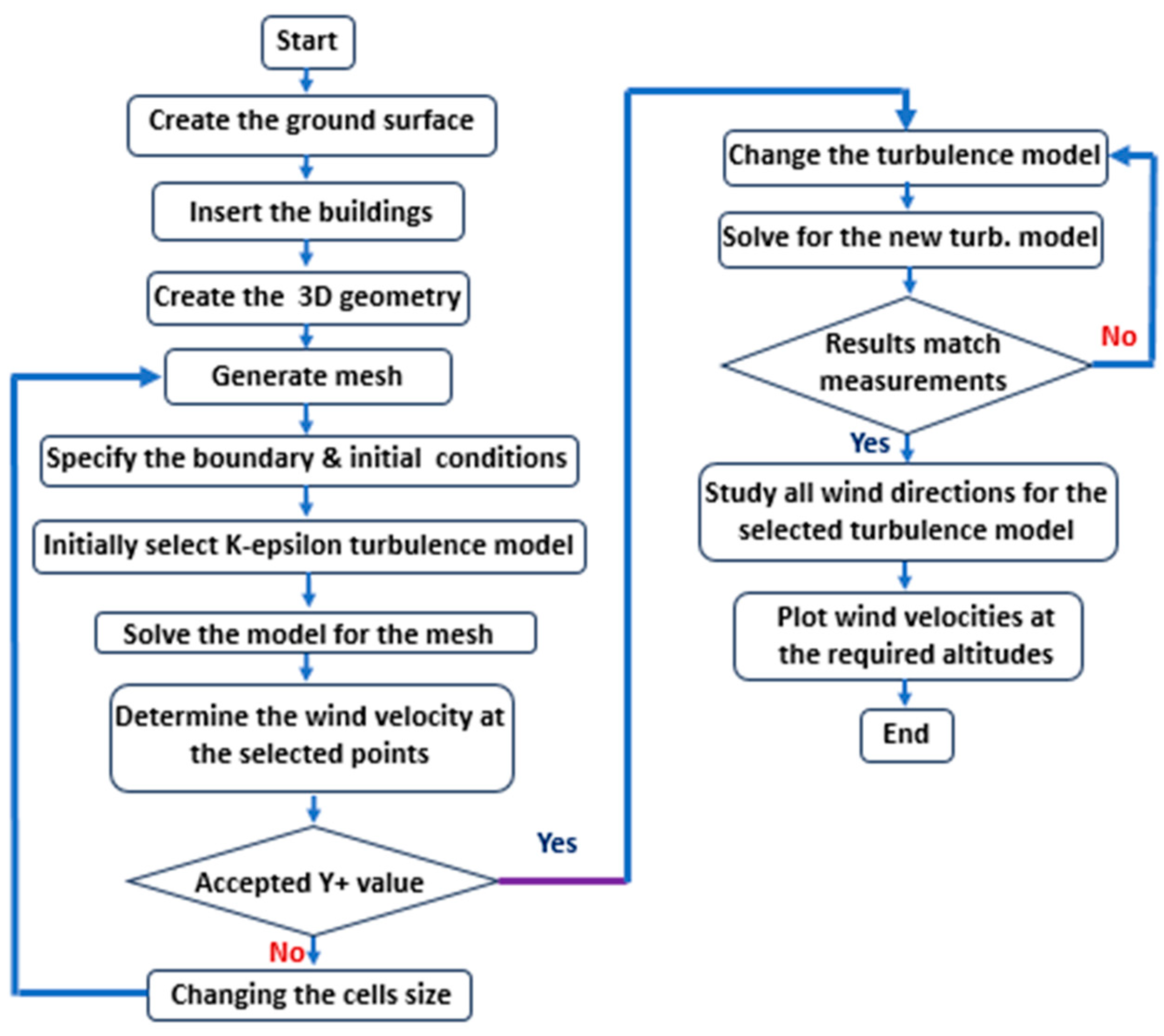
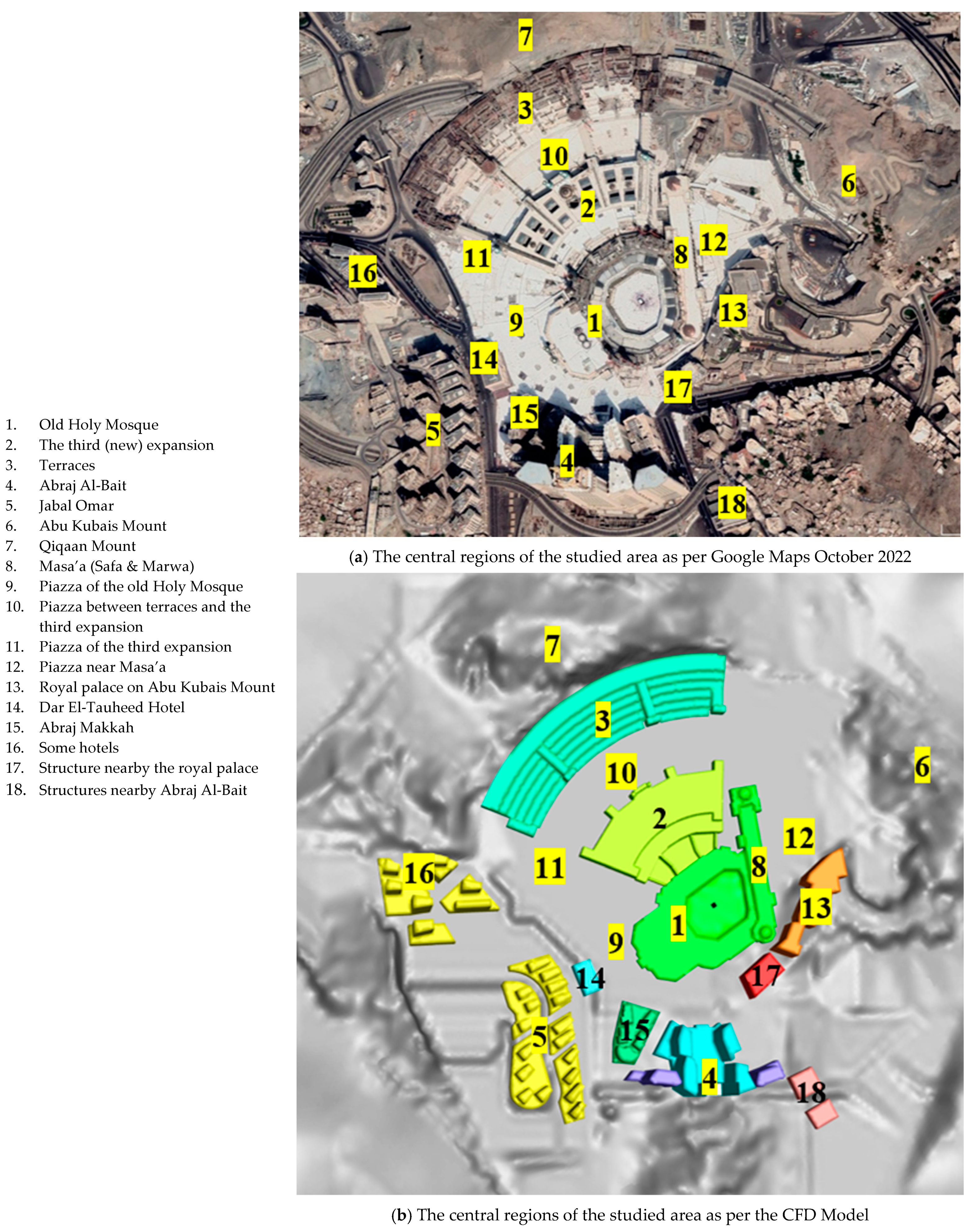
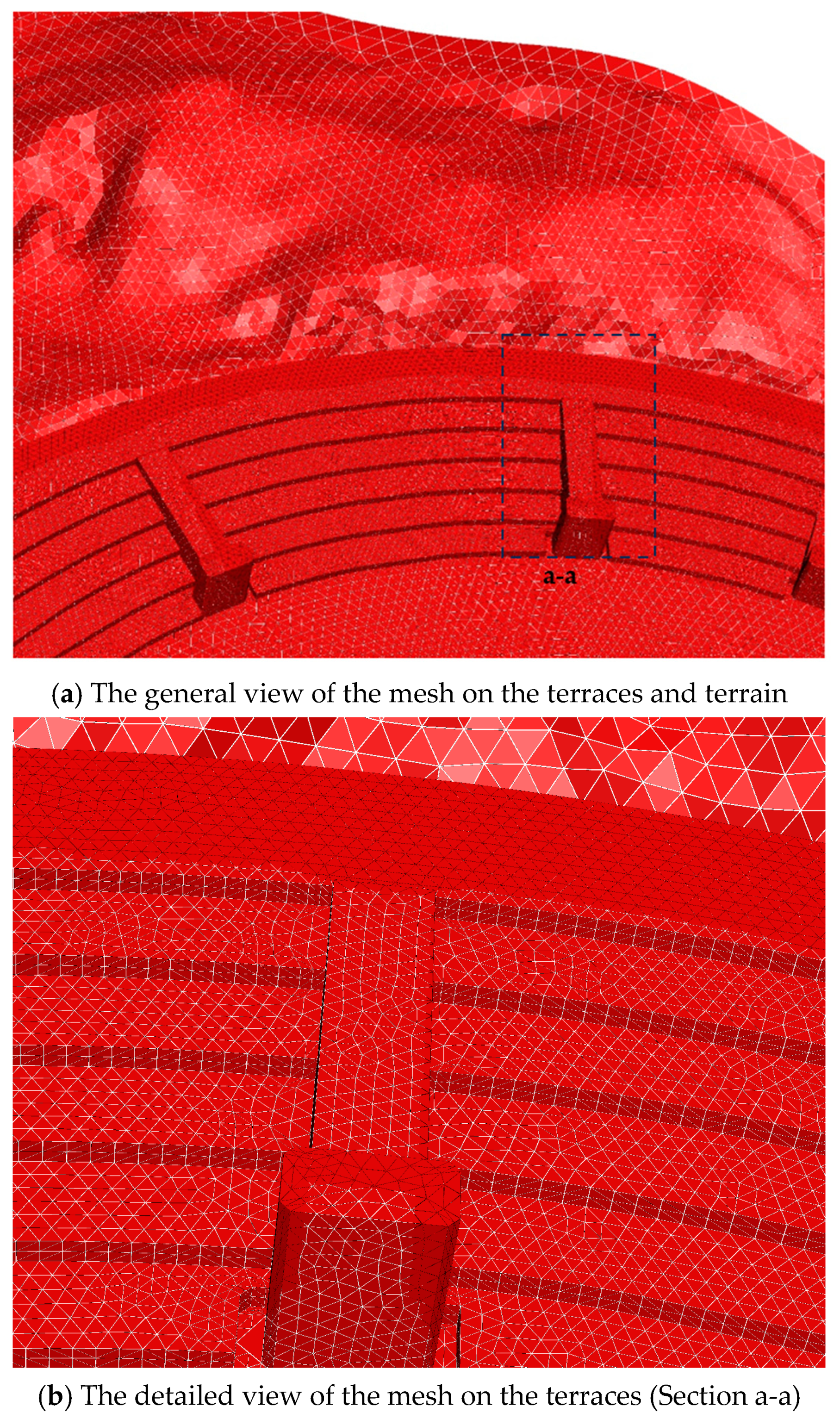
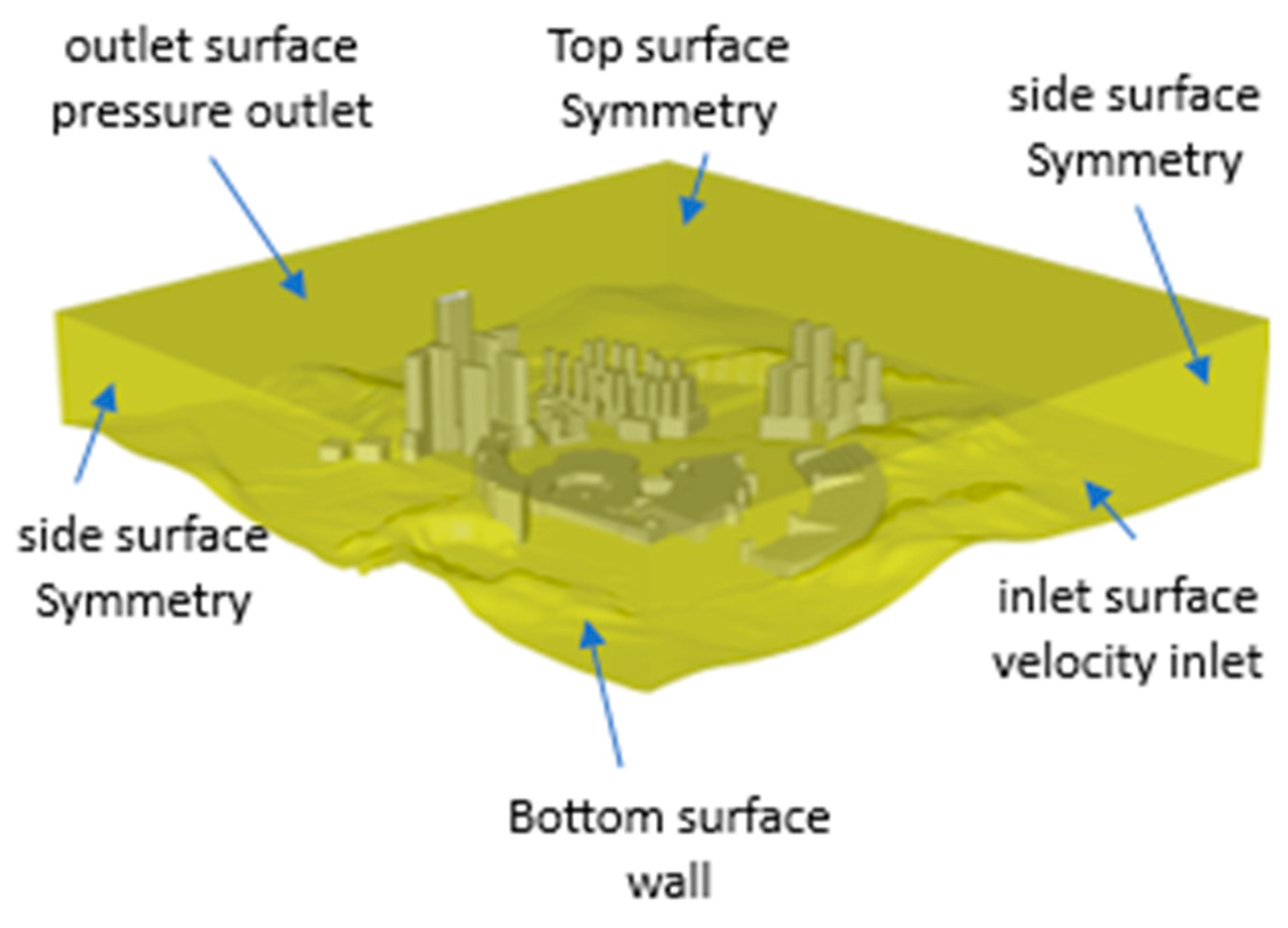
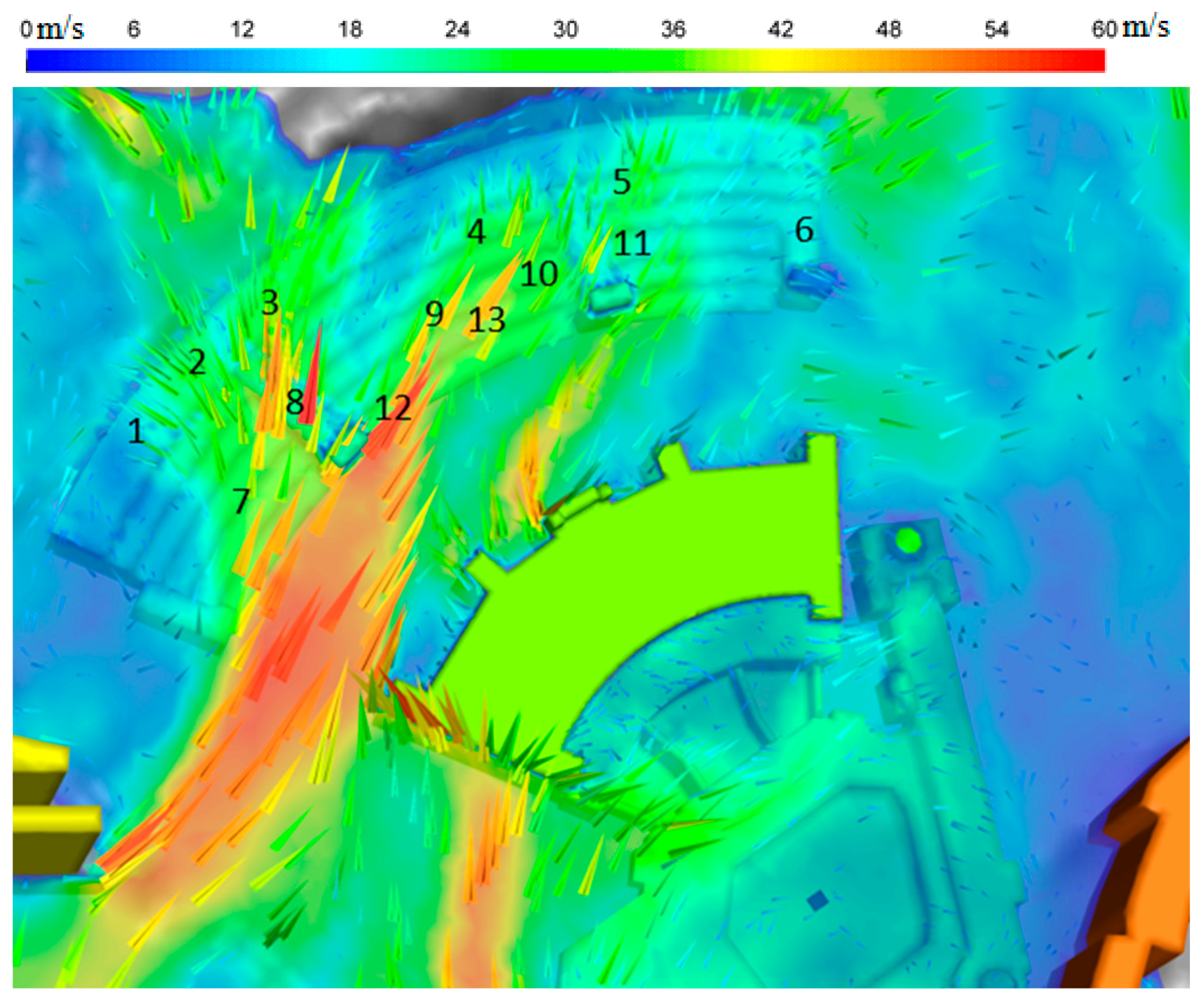
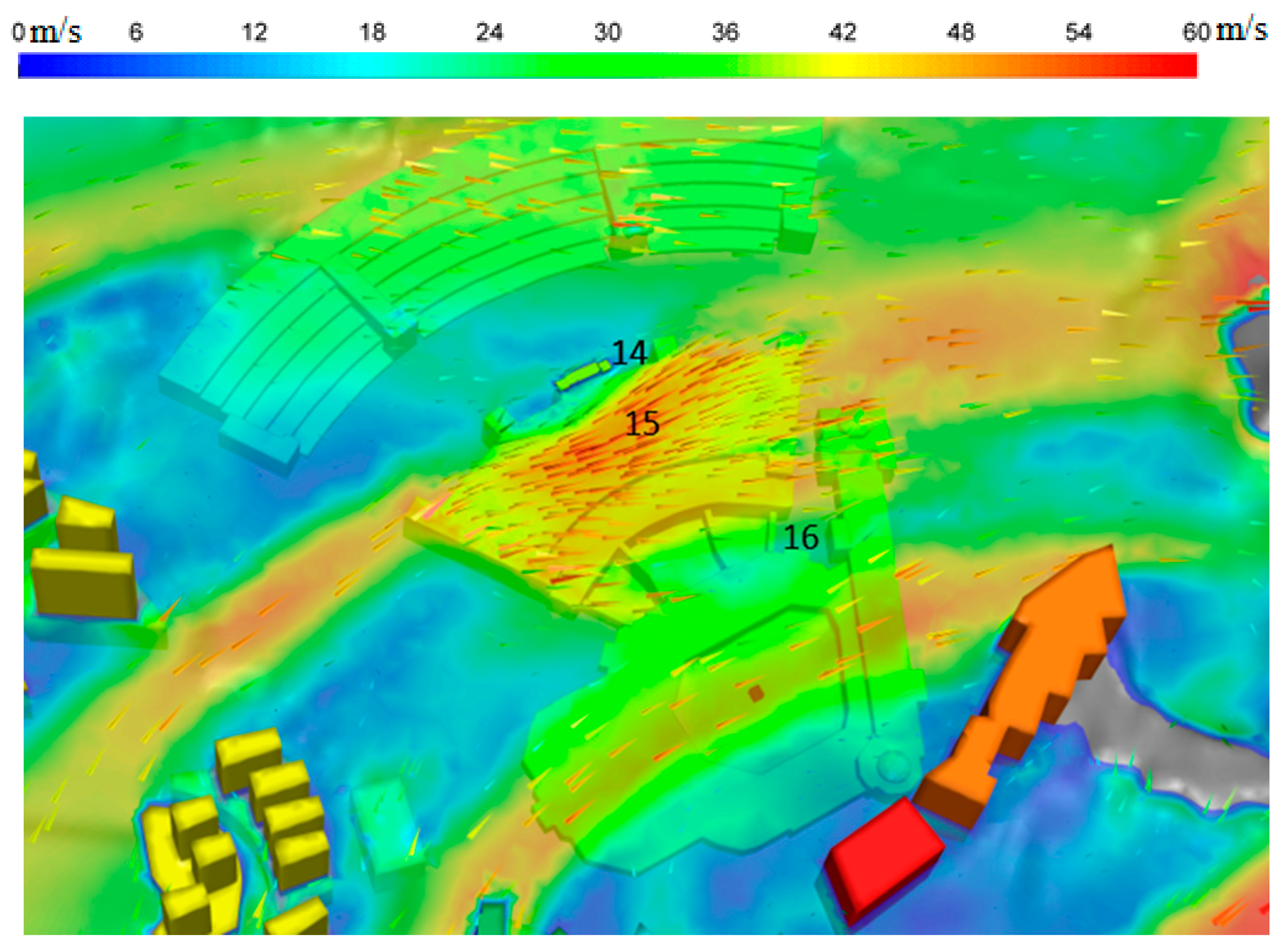
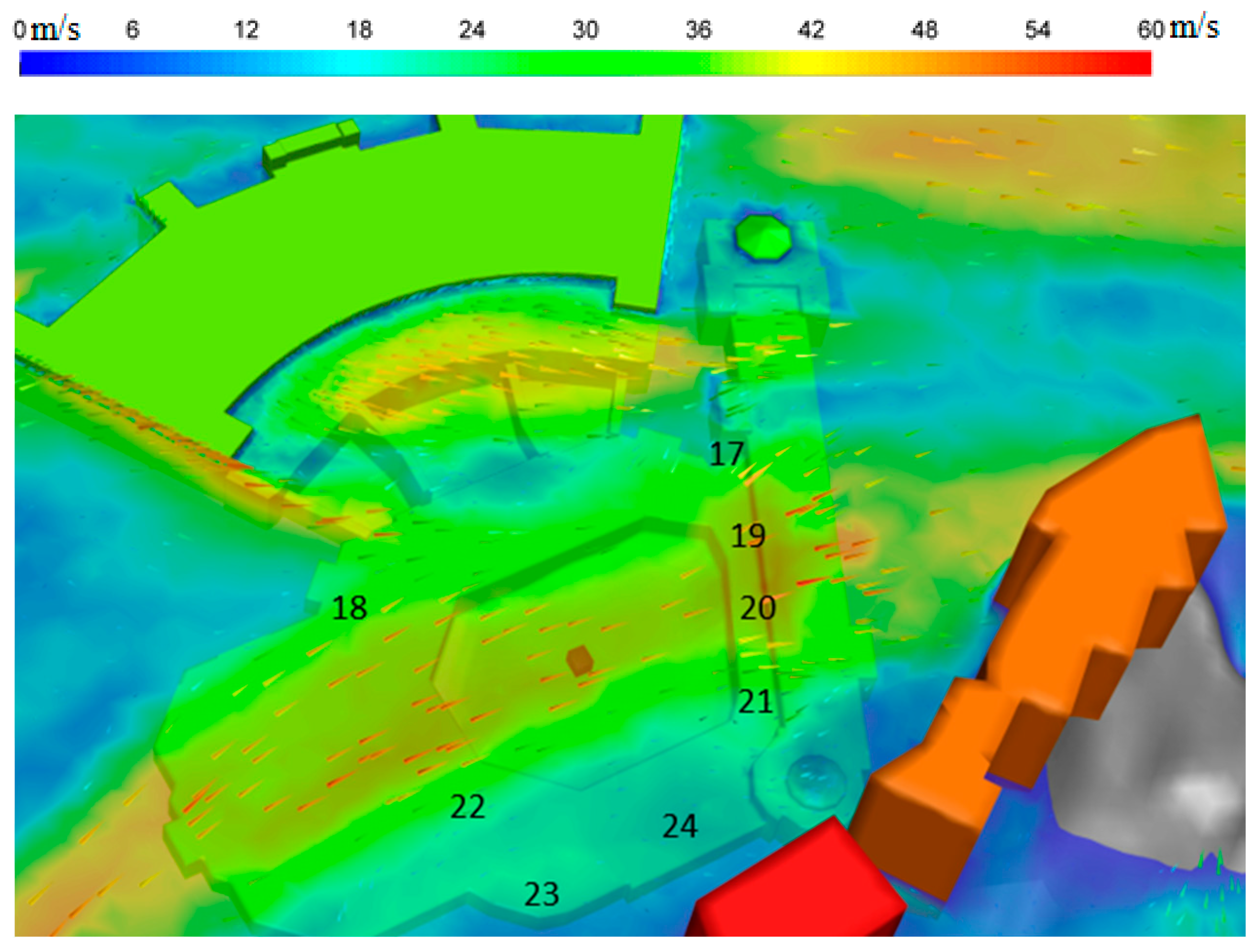
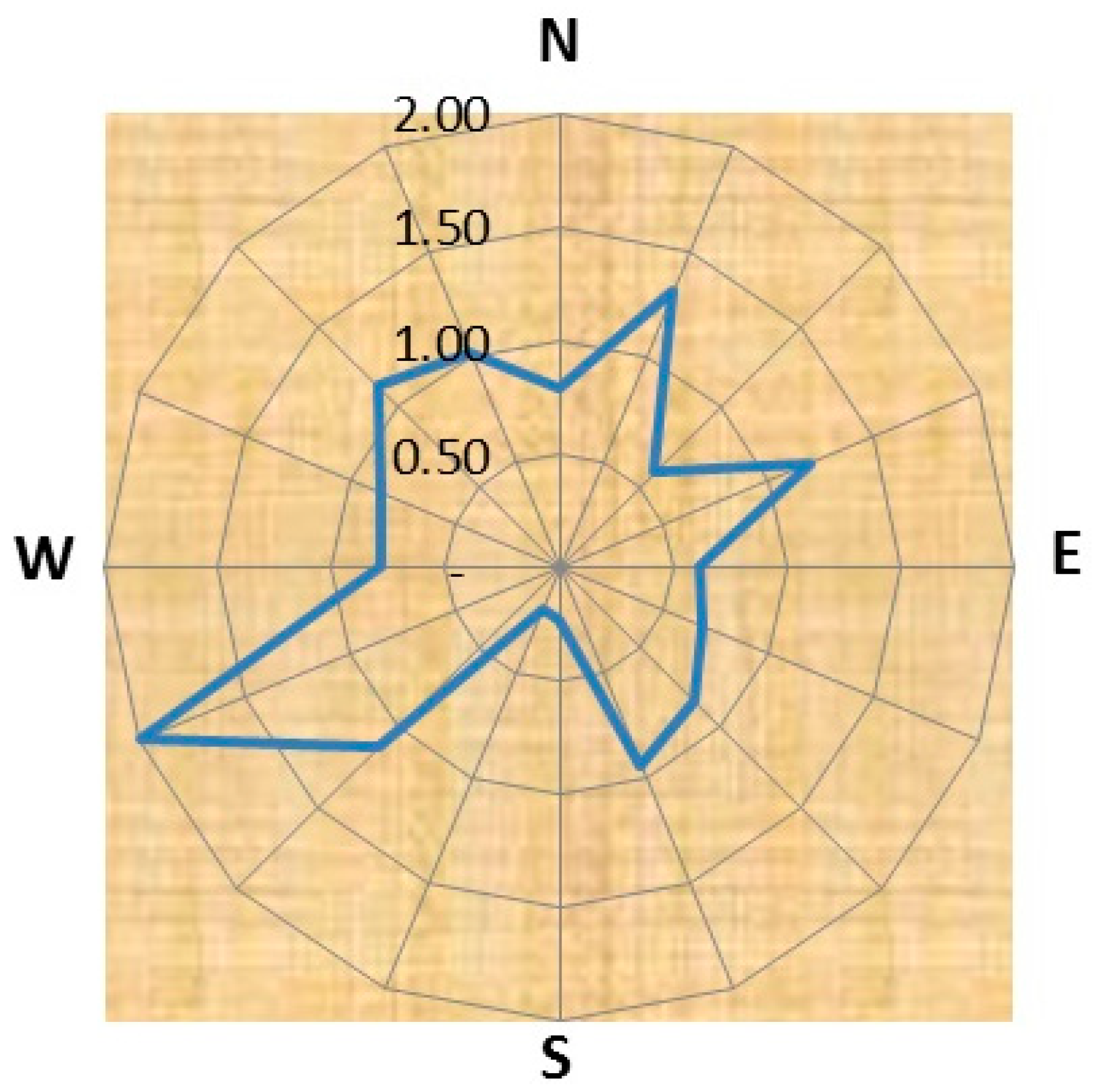
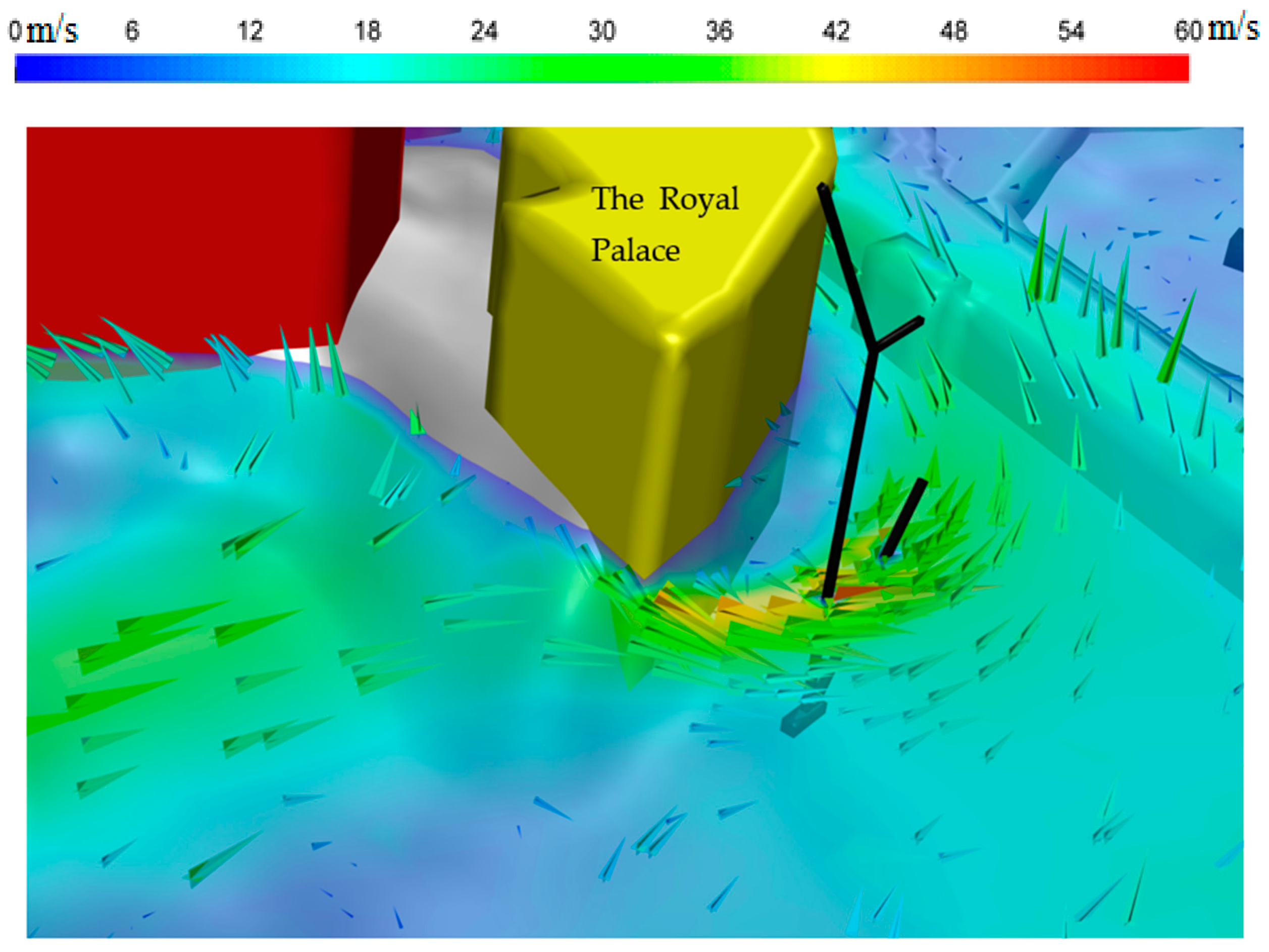
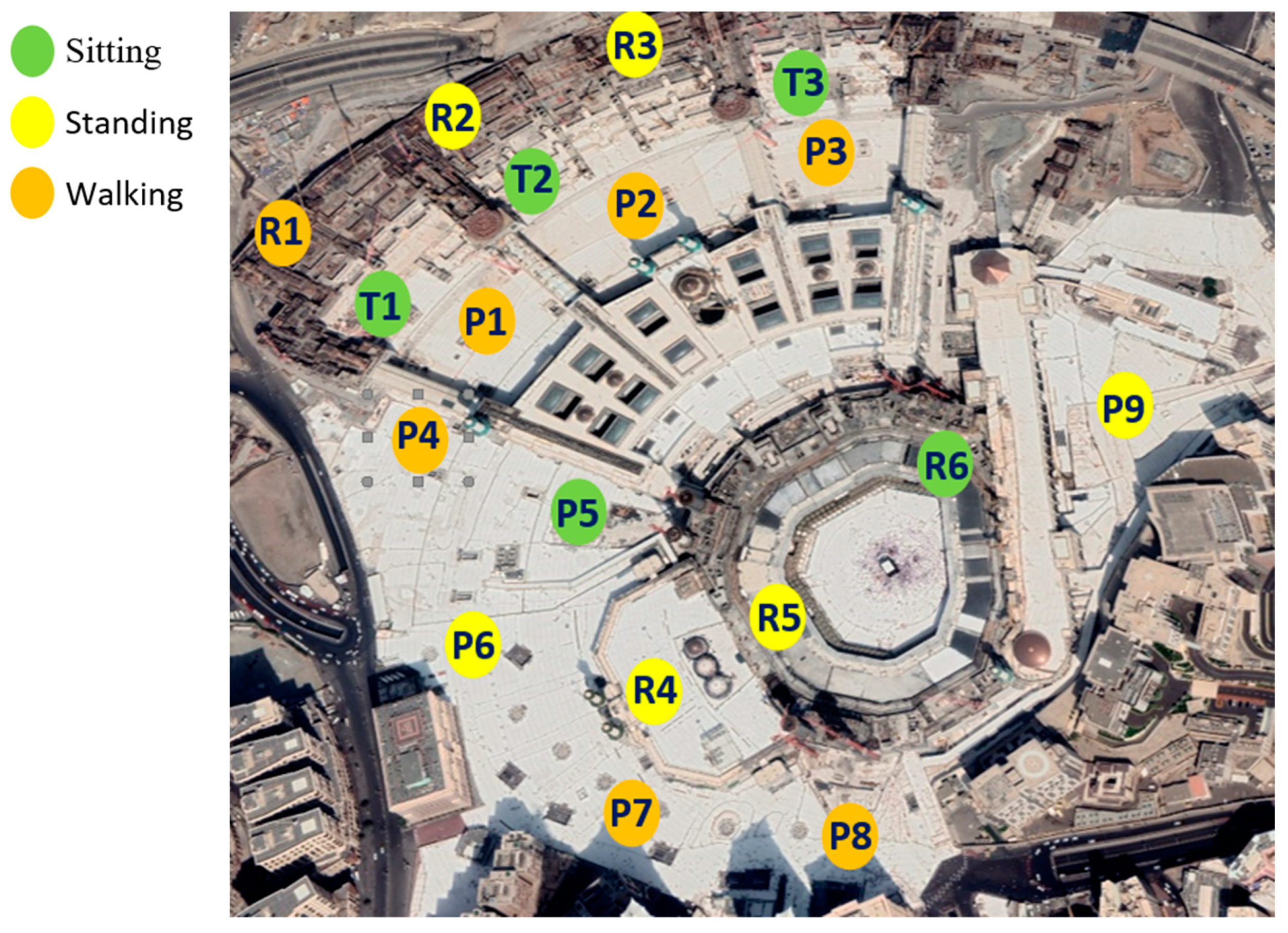
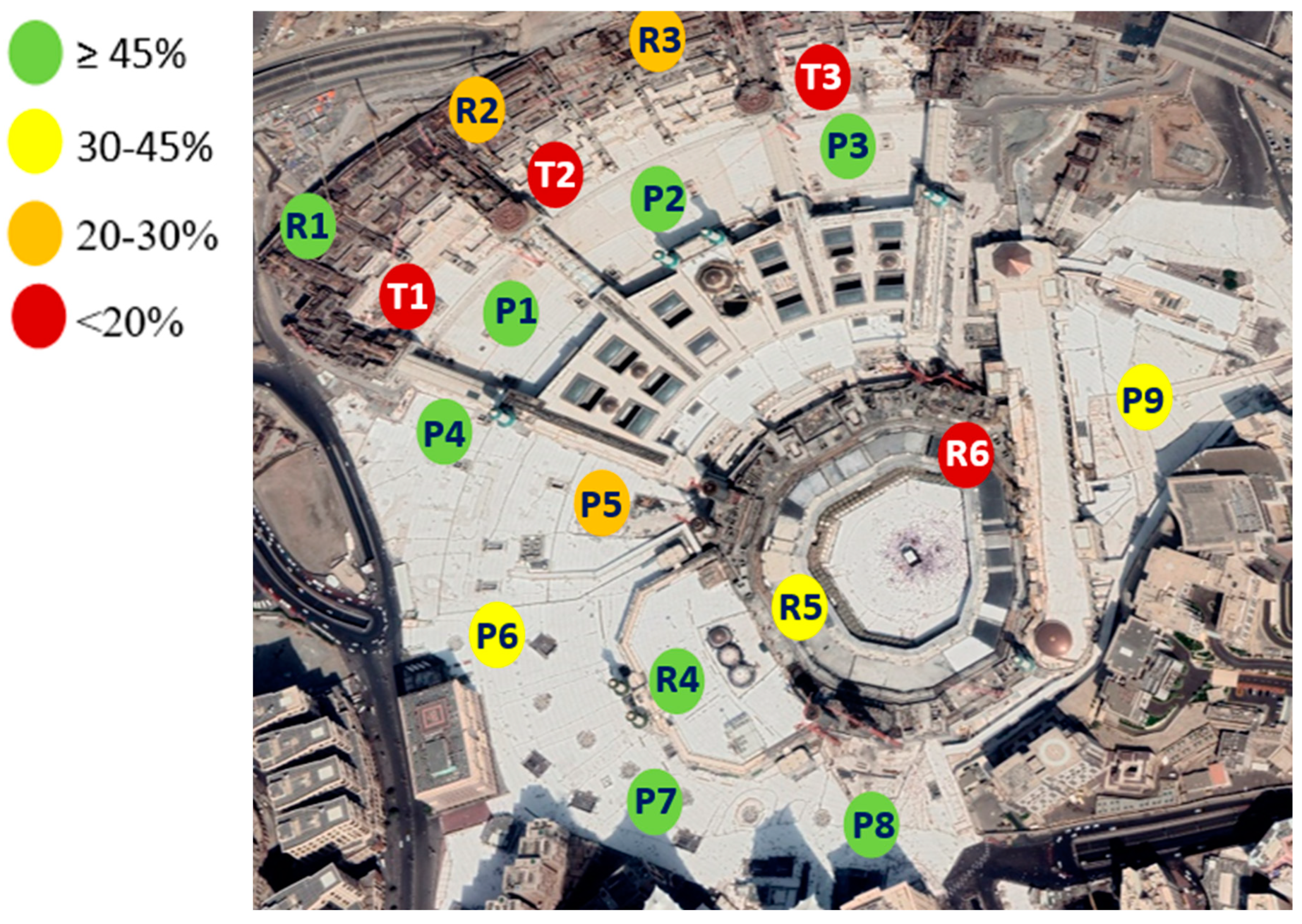
| Parameters | Settings |
|---|---|
| Solver | Pressure-based, steady |
| Velocity formulation | Absolute |
| Turbulence model | Standard k-ε |
| Gravity | Not applied |
| The inlet boundary | Velocity inlet |
| The outlet boundary | Pressure outlet |
| The top of the model | symmetry |
| The bottom of the model | wall |
| The other boundary | symmetry |
| Cell shape | Tetrahedral |
Disclaimer/Publisher’s Note: The statements, opinions and data contained in all publications are solely those of the individual author(s) and contributor(s) and not of MDPI and/or the editor(s). MDPI and/or the editor(s) disclaim responsibility for any injury to people or property resulting from any ideas, methods, instructions or products referred to in the content. |
© 2023 by the author. Licensee MDPI, Basel, Switzerland. This article is an open access article distributed under the terms and conditions of the Creative Commons Attribution (CC BY) license (https://creativecommons.org/licenses/by/4.0/).
Share and Cite
Farouk, M. Structural and Environmental Safety Studies of the Holy Mosque Area Using CFD. Buildings 2023, 13, 1809. https://doi.org/10.3390/buildings13071809
Farouk M. Structural and Environmental Safety Studies of the Holy Mosque Area Using CFD. Buildings. 2023; 13(7):1809. https://doi.org/10.3390/buildings13071809
Chicago/Turabian StyleFarouk, Mohamed. 2023. "Structural and Environmental Safety Studies of the Holy Mosque Area Using CFD" Buildings 13, no. 7: 1809. https://doi.org/10.3390/buildings13071809
APA StyleFarouk, M. (2023). Structural and Environmental Safety Studies of the Holy Mosque Area Using CFD. Buildings, 13(7), 1809. https://doi.org/10.3390/buildings13071809






